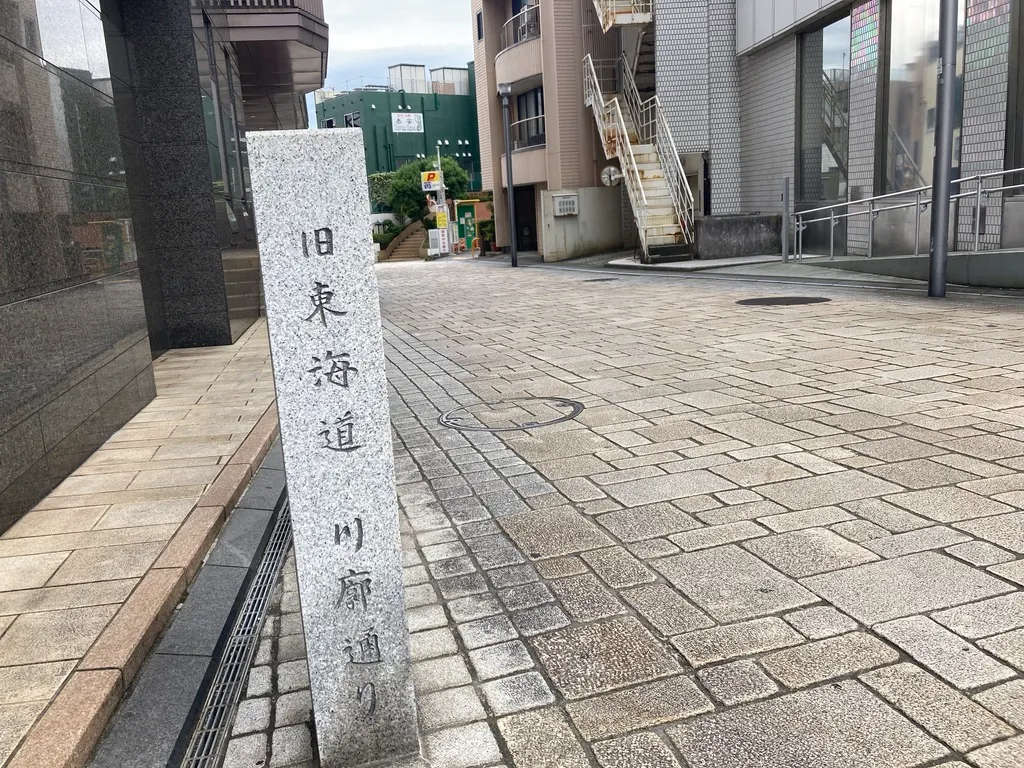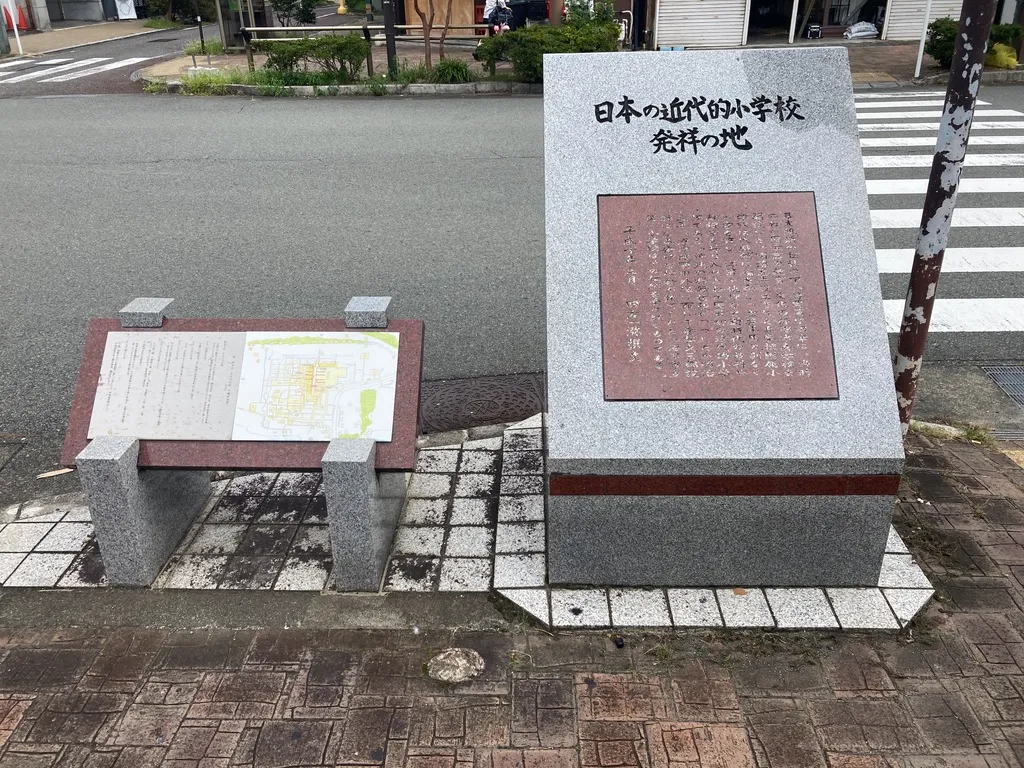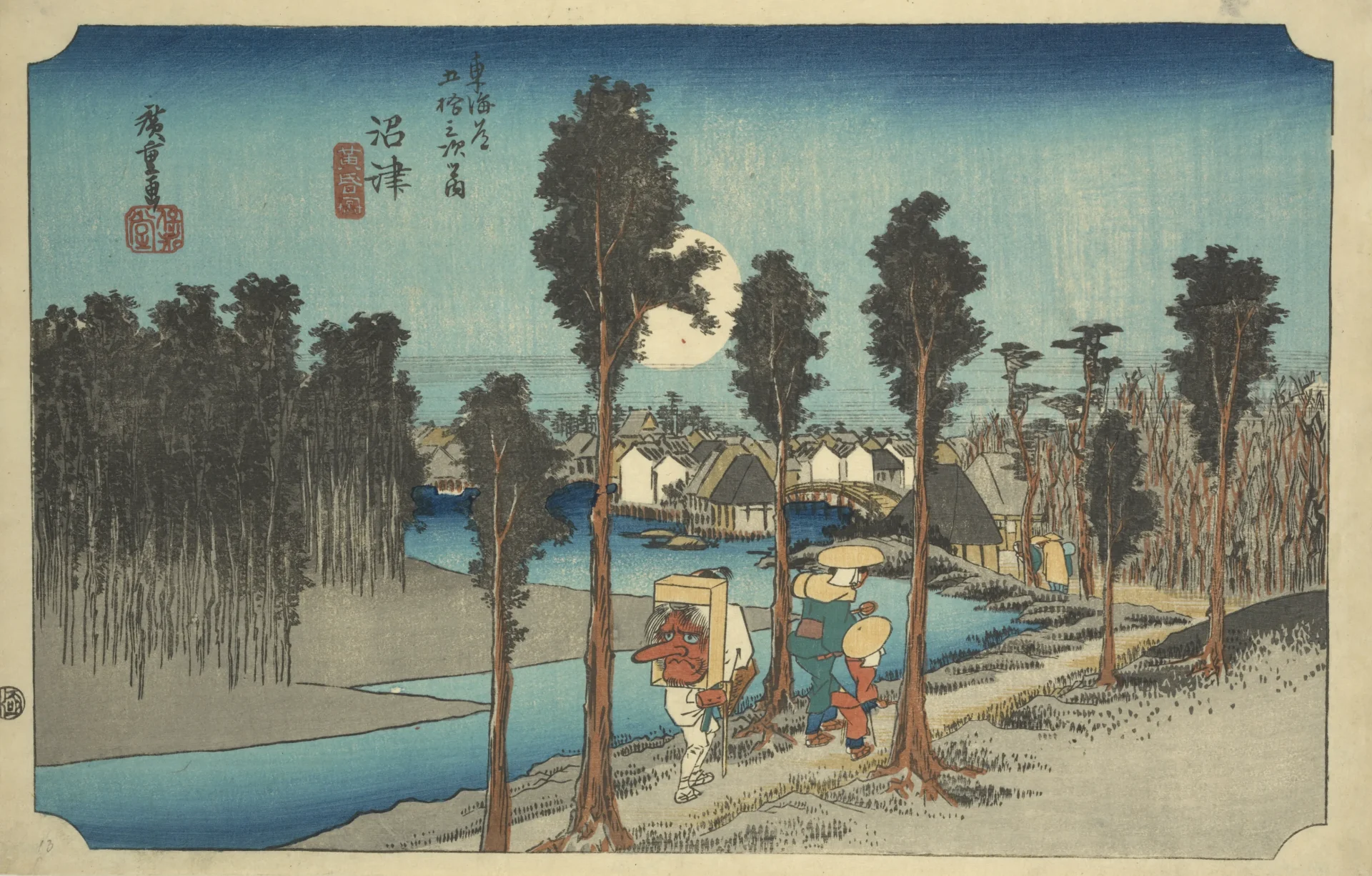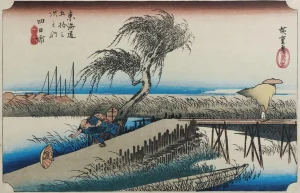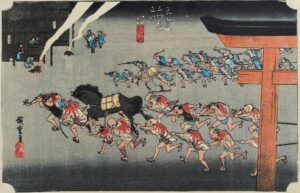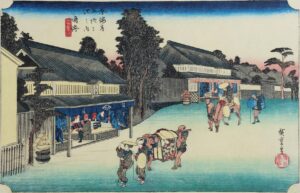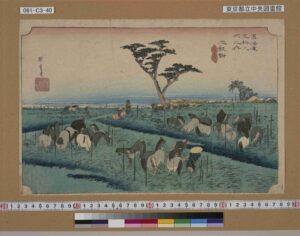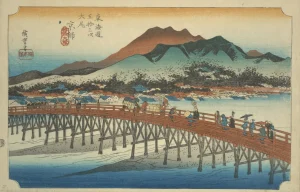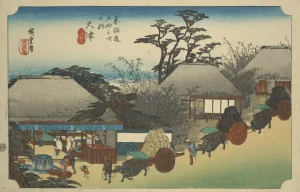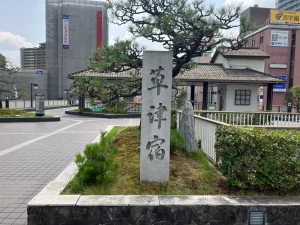This article was created using a translator. There may be expressions that are difficult to understand. If you have any questions, please check by yourself.
Please consult us about anything related to Fujieda City.
CONTACTNumazu-juku
This time, we would like to introduce Numazu-juku, the 12th inn.
Numazu-juku has 3 main inns, 1 side inn, and 55 inns with many residents.
Incidentally, Hiroshige’s ukiyoe depicts the mouth of the Kano River. This is what the Kano River looks like today. It’s a little confusing 💦.
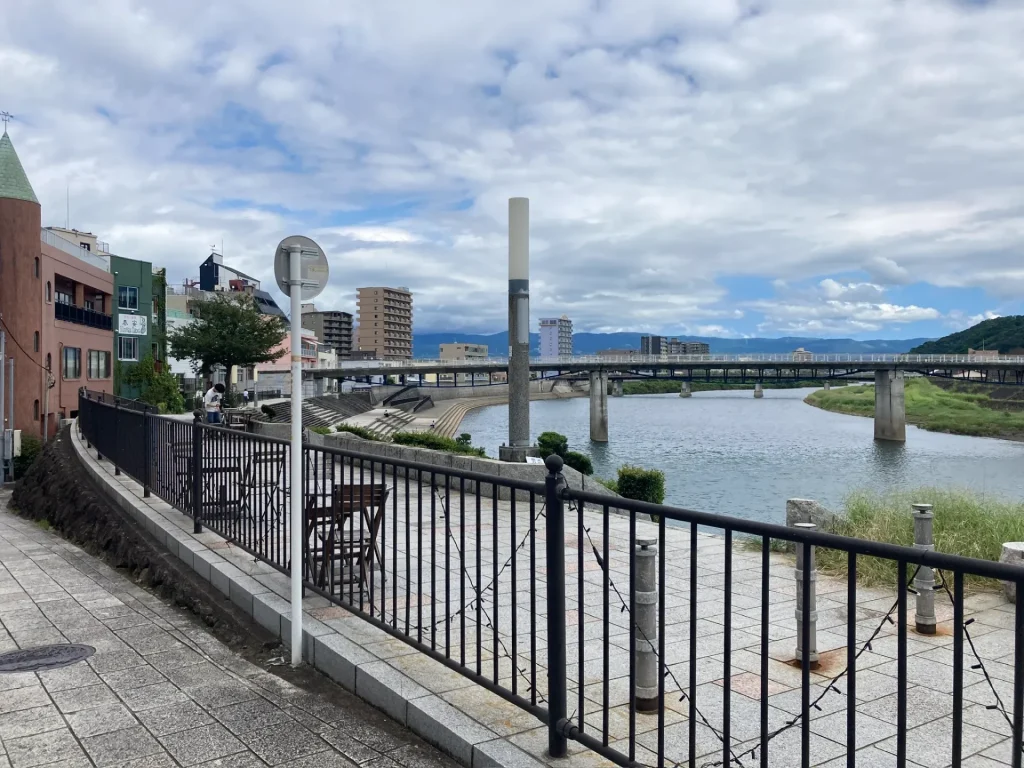
Numazu-juku Castle
The area where Numazujuku was located seems to have been near the current Otemachi area in Numazu City, Shizuoka Prefecture. This area was originally the site of a castle called “Sanmaibashi Castle,” built by Katsuyori Takeda, which was abandoned in 1613, although it was later owned by Yasuchika Matsudaira and Hideyoshi Toyotomi’s vassal, Kazuei Nakamura.
About 160 years later, Tadatomo Mizuno built Numazu Castle. Numazu Castle was later used as a military academy, which was closed down and dismantled in 1872.
Today, there is a monument in Chuo Park that marks the site of the main citadel of Numazu Castle.
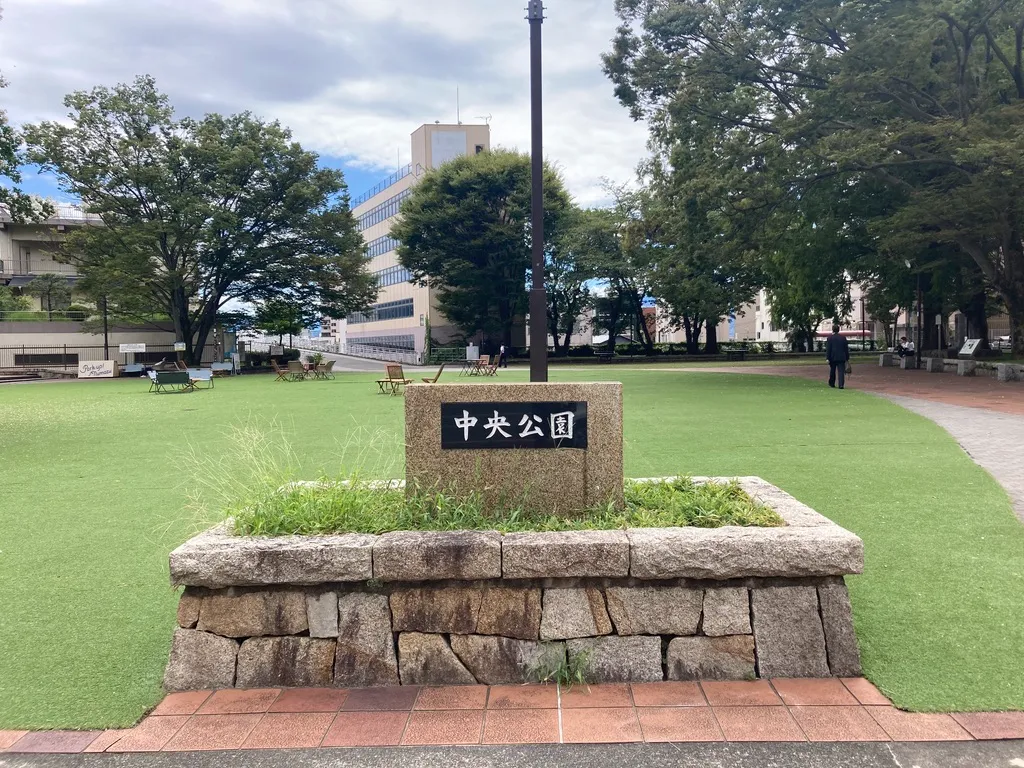

Stone wall of the castle
In this area, we can see a few places where the stonewalls of Sanmaibashi Castle are still standing. The most obvious one is the stone wall displayed in front of the Numazu Riverside Hotel. It seems to have been excavated from the construction site of the hotel.
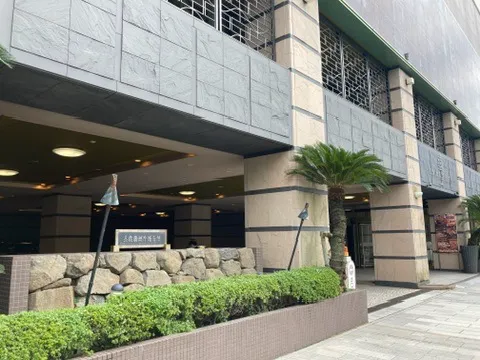
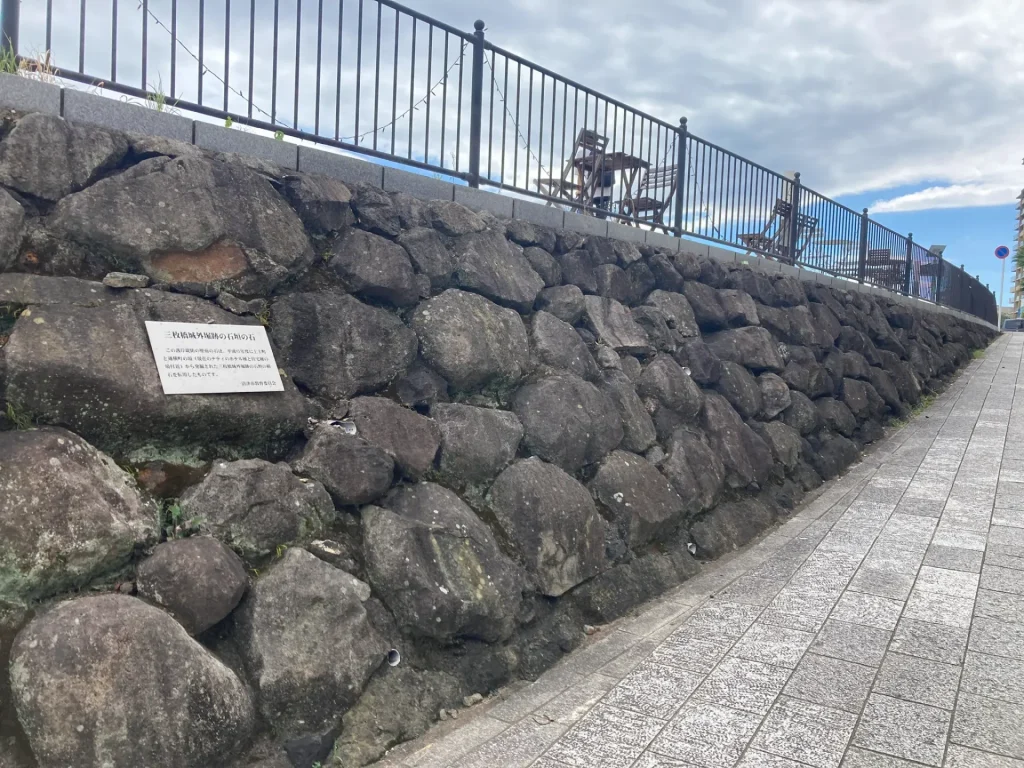
Jounji Temple, the resting place of Makisui Wakayama
Jounji Temple in Numazu-juku is the resting place of that famous artist, Makisui Wakayama. It was a magnificent temple surrounded by pine trees and greenery. When you step into the temple, the atmosphere is completely different. I felt as if I was being purified.
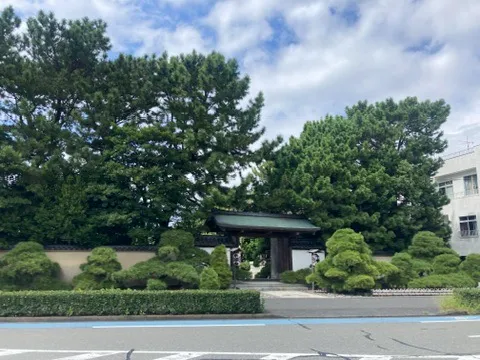
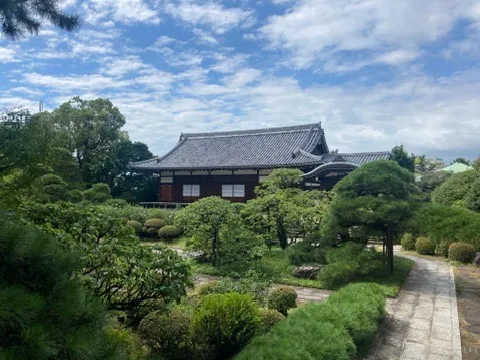
The grave of Wakayama Makisui, a poet who loved Numazu’s “Senbon Matsubara” is also quietly located here.
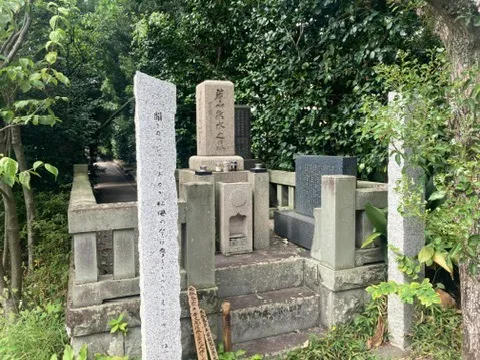
Senbon Matsubara (variety of rice)
There is a 10-kilometer-long pine grove along the Suruga Bay coast. It seems that this pine grove has been selected as one of the 100 most scenic spots in Japan and one of the 100 best white sand and green pine trees in Japan.
It was indeed magnificent and magnificent. It is said that the pine trees were originally planted by Zoei Shonin, the founder of the Jounji temple mentioned earlier.
Suruga Bay is right in front of the temple, and walking through the pine forest while feeling the sea breeze is so relaxing.
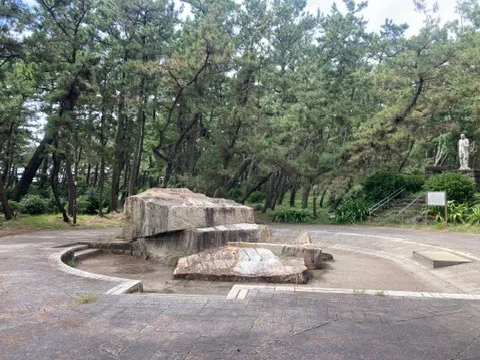
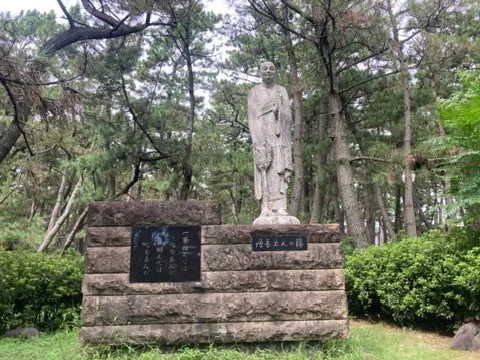
There is also a monument to the poem of Makisui Wakayama.
How many mountains and rivers I must pass through to reach a country where my loneliness will be exhausted.
Meaning: I wonder how many mountains and rivers I will have to cross in the future to reach a country where my loneliness will be exhausted. With this thought in mind, I continue my journey today.
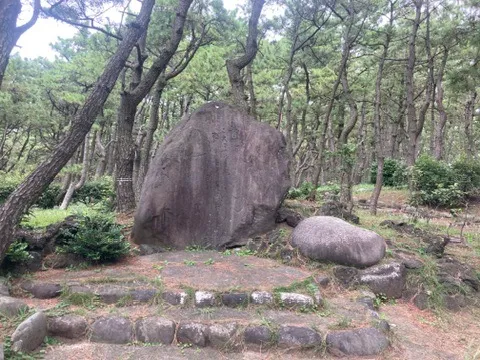
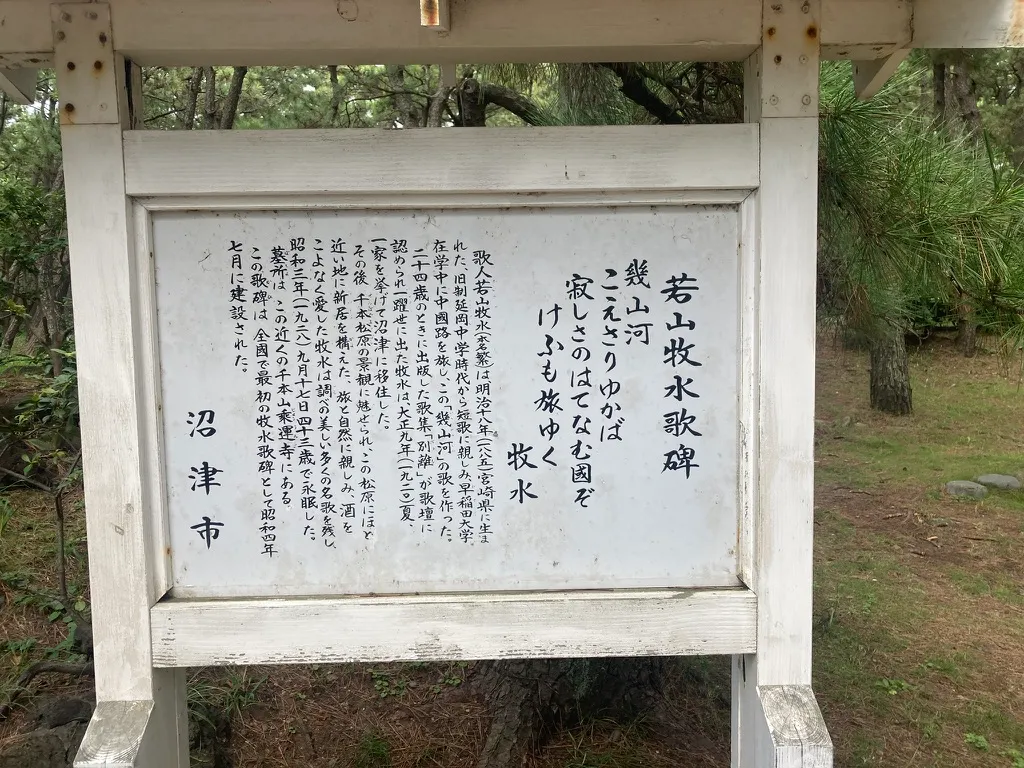
From Senbon Matsubara, you can go towards Numazu Port, where you will find the Wakayama Makisui Memorial Museum.
If you are interested, please visit.
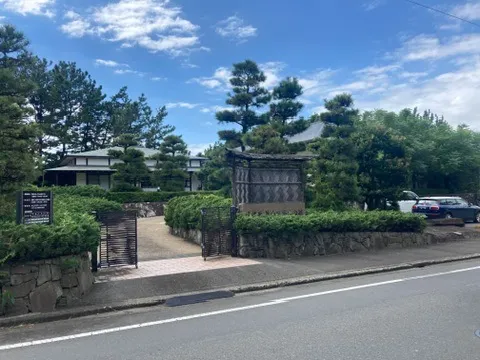
Numazu-juku and others
The only road in Numazu-juku that remains the same width as in the Edo period is “Kawakuro-dori,” where the old Tokaido sign stands, and a monument stands at the birthplace of a modern elementary school, reminding us of the history of the area in places.
